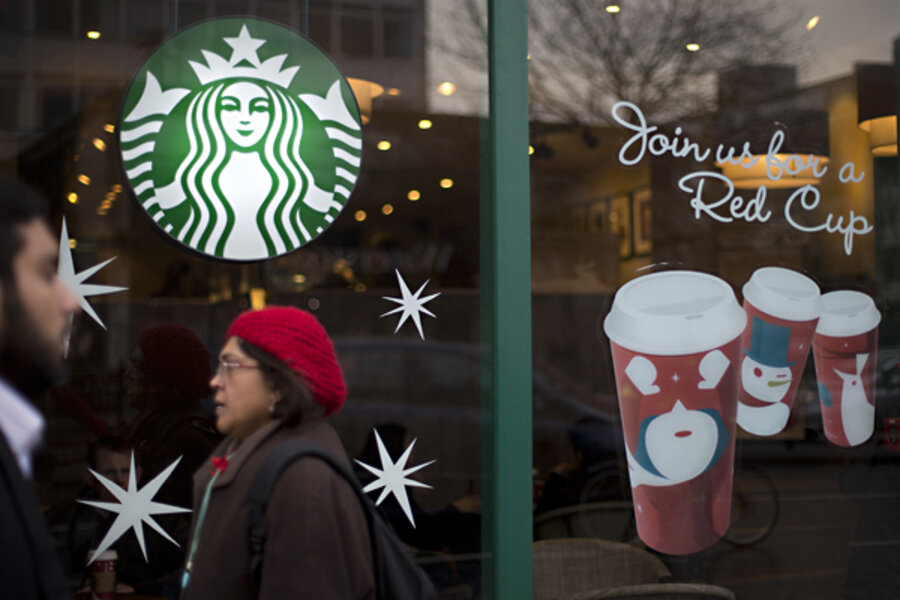Starbucks $450 steel card: class warfare in a coffee cup?
Loading...
One-percenters need their coffee too, and Starbucks has just the thing.
The global coffee chain has just announced what will be the most opulent gift card ever: the Limited Edition Metal Starbucks Card. For a mere $450, you can get the java enthusiast in your life $400 worth of Starbucks coffee, plus a gold-level Starbucks membership (the extra cash pays for the card itself, which costs $50 to make).
The cards will go on sale this Friday, Dec. 7. Just 5,000 will be produced initially, and they will only be available through the luxury goods website Gilt.com.
A gift card made of metal may be a little too reminiscent of the clunky tools and appliances used on “The Flintstones,” but rest assured: The company writes via email that the card only weighs 20 grams, about the same weight as eight pennies. Once you go through the $400, it’s refillable, and it comes with all the perks of a Starbucks Gold level membership, including a free birthday drink.
A $400 gift card would keep the coffee flowing for a long time. USA Today has a nifty infographic showing how far the Steel Card would go depending on the drink: 106 Grande Frappuccinos, for example, or 205 Grande brewed coffees (without tax).
The card isn’t Starbucks’ first attempt to cater to a higher-end clientele. Just last week, the chain introduced a $7 cup of regular 16-ounce coffee to 45 stores in the Pacific Northwest. A regular cup costs about $2.20. Brewed from a super-rare coffee bean variety, the Costa Rica Finca Palmilera coffee is Starbucks’ priciest brew ever.
The stainless steel Starbucks card is new territory for the gift card sector, though high-end credit cards are nothing new. The American Express Centurion Black Card, made of Titanium, is the most famous example, offering personal concierge service and travel agent for its high-spending members. In 2008, Master Card and a Kazakhstan-based bank launched a high spending-limit credit card inlaid with diamonds.
By those standards, the metal Starbucks Card is downright middle class. Still, some see it as an uncouth symbol of conspicuous consumption. "This is a card for the 1%," cultural anthropologist Robbie Blinkoff told USA Today. "It's all about status, and to tell you the truth, I don't know if I'd want to be seen with one of these."
But on Twitter, at least, the reaction has been mostly what the card is probably intended to generate in the first place: bemused interest.
“I don't want to be greedy... so I'll just need 1 of these,” Tweets one user.
“who wants to buy me the new $450 Starbucks gift card?? it's a solid investment...because it's made of steel,” jokes another.






